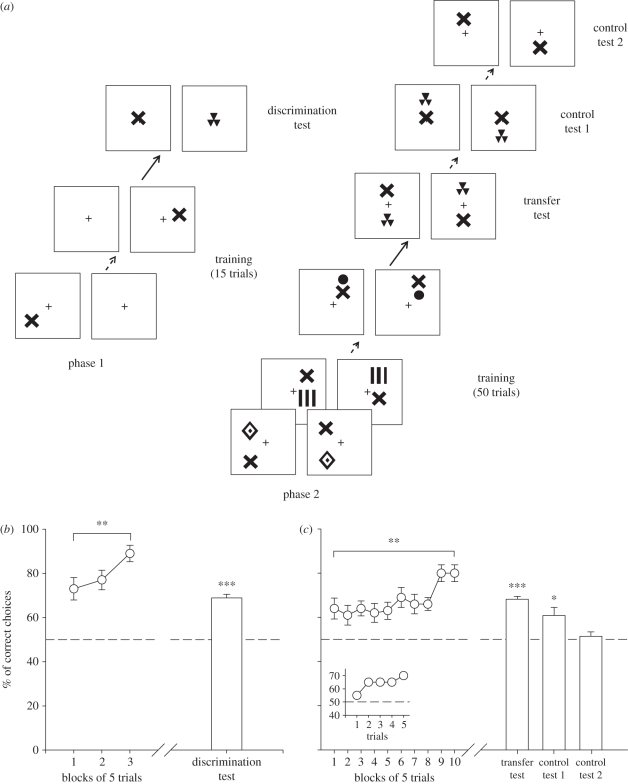Figure 3.
Experiment 2. (a) Example of the conditioning and testing procedure. Half of the bees were rewarded on the ‘target above referent’ relation whereas the other half was rewarded on the ‘target below referent’ relation. The referent pattern was either the disc or the cross depending on the group of bees trained. The transfer test was not rewarded. (b) Phase 1 (pre-training): acquisition curve during pre-training (percentage of correct choices as a function of blocks of five trials) and performance (cumulative choices during 45 s test) in the non-rewarded discrimination test (white bar). Data shown are means and s.e.m. (n = 20). Bees learned to choose the referent pattern and to discriminate it from other patterns used as targets in the subsequent training phase (**p < 0.01; ***p < 0.001). (c) Phase 2 (training): acquisition curve during training (percentage of correct choices as a function of blocks of five trials) and performance (cumulative choices during 45 s test) in the non-rewarded tests (white bars). Data shown are means and s.e.m. (n = 20 for acquisition curve and transfer test, and n = 8 for controls 1 and 2). The inset shows acquisition performance during the first five trials that integrate the first training block. Bees learned the concept of above/below and transferred it to novel stimuli. Controls 1 and 2 show that the spatial location of the referent on the background was not used as a discrimination cue to resolve the task (*p < 0.05; **p < 0.01; ***p < 0.001).

